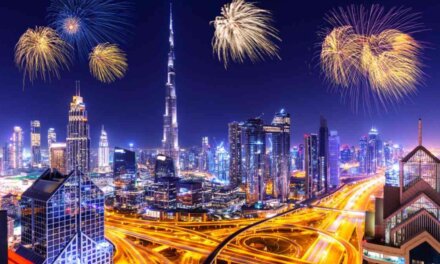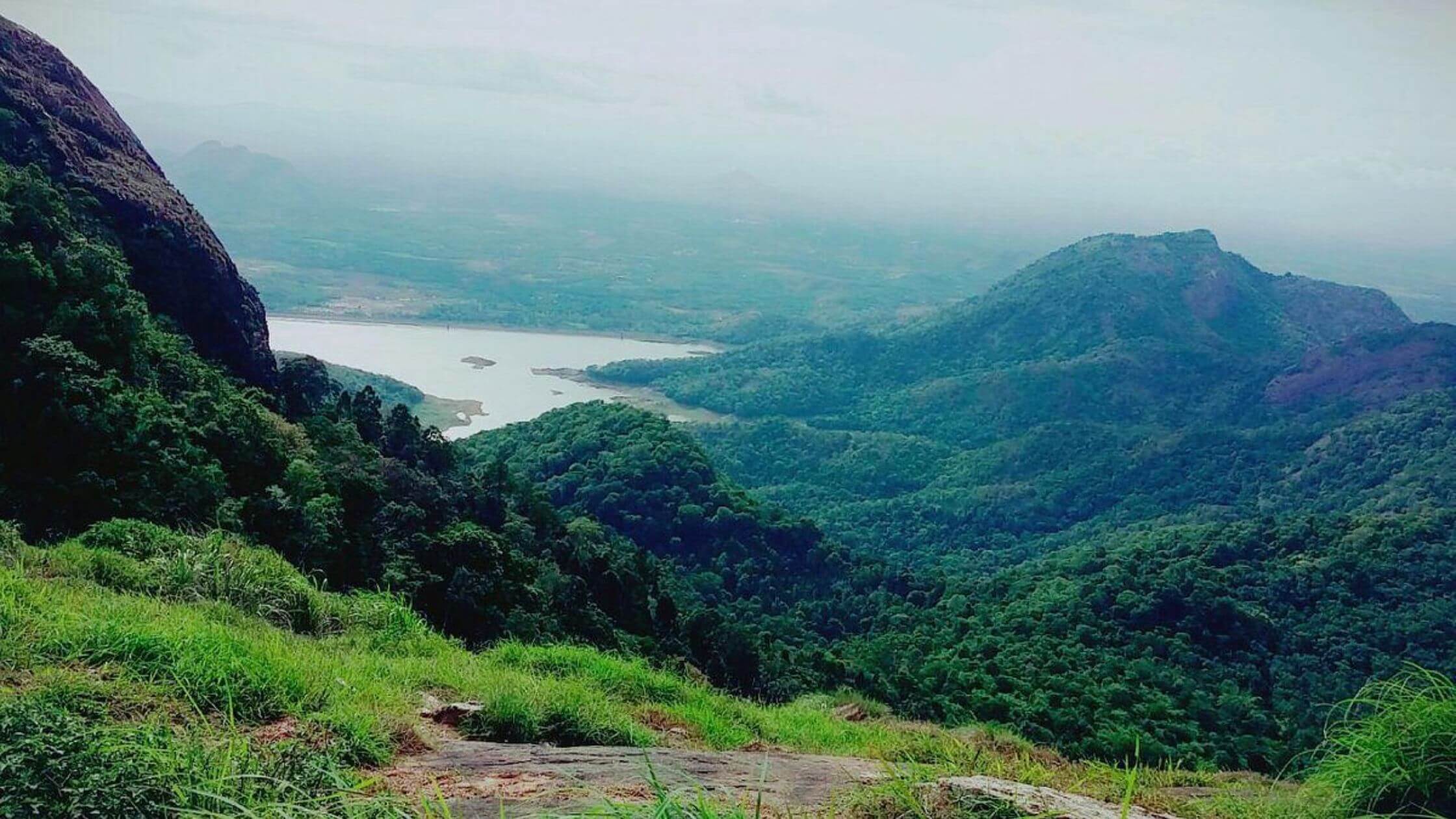
Shree Sanwariya Seth Temple in Mandfiya – Rajasthan Near Chittorgarh
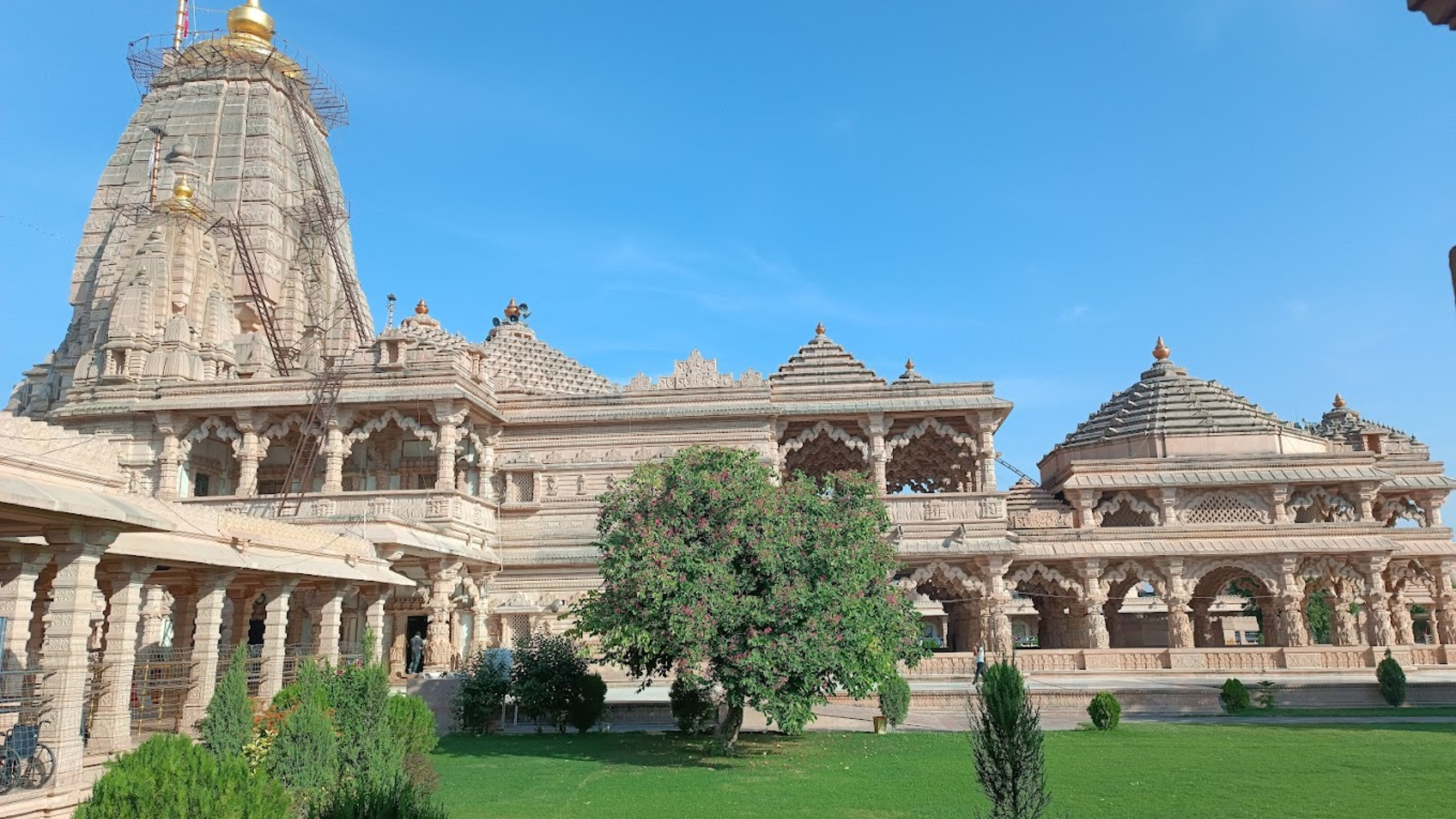
Sanwaliya Seth or Sanwariya Seth also known as Shri Sanwaliya Seth Ji Maharaj is a revered Hindu deity worshipped primarily in the village of Mandphia in the state of Rajasthan, India. He is considered an incarnation of Lord Krishna and is associated with the protection, prosperity, and fulfillment of devotees’ wishes.
The main temple dedicated to Sanwaliya Seth is located in the village of Mandaphia in the Chittorgarh district of Rajasthan. The temple attracts a large number of devotees, who come from different parts of the country to seek the blessings of the deity.
Table of Contents
- Believes Related To Sanwaliya Seth
- Origin and History
- Significance of Shree Sanwaliya Seth Temple
- Architechture Of Shri Sanwaliya Seth Ji Temple
- Temple and Worship
- Sanwaliya Seth Temple Darshan Timings
- Sanwaliya Seth Temple Rituals & Aarti Timings
- How to Reach Sanwaliya Seth Temple
- Best Time To Visit Sanwaliya Seth Ji Temple
- Accommodation Near Sanwaliya Seth Ji Temple
- Food Option Near Sanwaliya Seth Ji Temple
- Festivals and Celebrations
- Devotee Experiences
- Miracles and Healing Powers
- Influence on Society
- Devotional Practices in Sawanliya Seth Ji
- Places To Visit Near Sanwaliya Seth Temple
- Discover the Magnificence of Sanwaliya Seth Ji Temple!
Sanwaliya Seth is often depicted as a dark-skinned or “sanwala” (hence the name) young boy with a crown on his head adorned with various ornaments. He is usually portrayed holding a trident (trishul) and a discus (chakra) in his hands. Devotees offer prayers, perform aarti (ritual of waving lighted lamps), and offer sweets and flowers to seek his blessings.
Believes Related To Sanwaliya Seth
It is believed that Sanwaliya Seth appeared in the dream of a milkman named Bholaram Gurjar in the 1840s and instructed him to excavate his idol from a particular spot. When the idol was found, a temple was constructed at the site, and since then, the deity has been venerated as Sanwaliya Seth.
The temple has gained popularity due to the belief that the deity fulfills the wishes of his devotees. Many people visit the temple to seek blessings for success in business, education, health, and other aspects of life. The temple also provides various amenities to the devotees, including free meals (prasad) and accommodation.
The annual fair or mela held at the temple during the Navratri festival attracts a large gathering of devotees. The devotees sing bhajans (devotional songs), participate in religious rituals, and immerse themselves in the devotional atmosphere.
Sanwaliya Seth has a significant following among people in Rajasthan and other parts of India, and his devotees consider him a protector and provider of blessings. The worship of Sanwaliya Seth reflects the devotional and cultural traditions of the region and holds a special place in the hearts of his devotees.
Origin and History
In the ancient scriptures, it is mentioned that Lord Krishna appeared as Sanwaliya Seth to fulfill a divine purpose and bless his devotees with his divine grace.
The rich origin and history of Sanwaliya Seth serve as a testament to the enduring power of devotion and the belief in the divine presence that guides and blesses those who seek his grace. Through the tales and legends surrounding Sanwaliya Seth, devotees find inspiration, solace, and a profound connection with the divine.
| Year | Event |
|---|---|
| 1840 | The idol of Sanwaliya Seth was discovered in Mandaphia |
| 1840s | A small temple was constructed to house the idol |
| 1930s | The temple underwent renovation and expansion |
| 1960s | The temple gained popularity among devotees |
| 1992 | A trust was established to manage the temple |
| 2000s | The temple witnessed a surge in devotees and pilgrims |
| Present | The temple continues to be a significant pilgrimage site in Rajasthan |
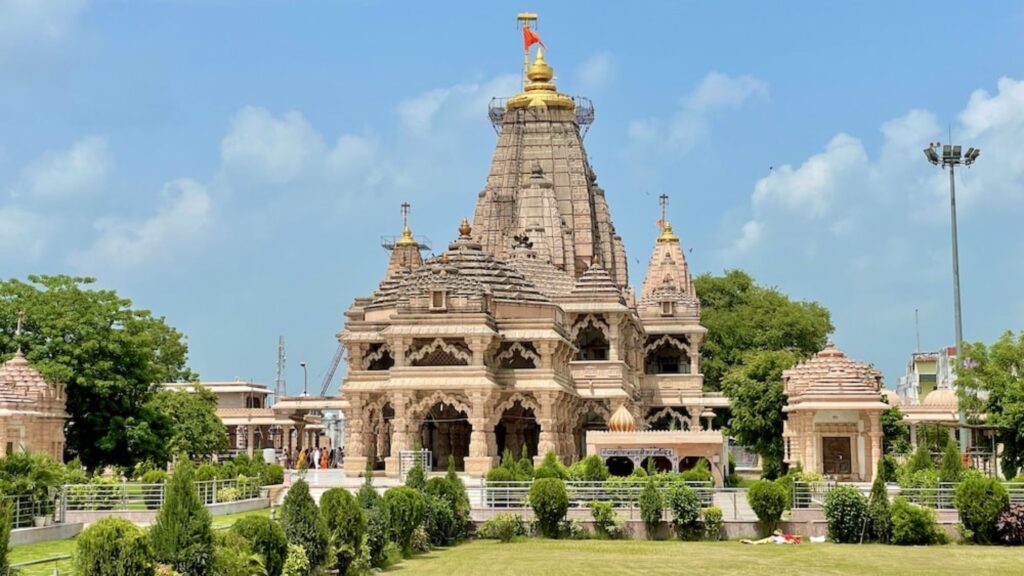
Significance of Shree Sanwaliya Seth Temple
Sanwaliya Seth holds immense significance in Hinduism, capturing the devotion and reverence of millions of followers. His significance is deeply rooted in the belief that he is an embodiment of divine grace and blessings. Here are some key aspects that highlight the significance of Sanwaliya Seth in the hearts and lives of his devotees:
- Fulfilling Wishes: It is believed the place to be highly benevolent and compassionate. Devotees have immense faith in his ability to fulfill their wishes and desires. Many people visit the temple with specific requests or prayers, seeking his intervention in various aspects of their lives, such as health, wealth, career, relationships, and overall well-being.
- Symbol of Krishna’s Love: Sanwaliya Seth is considered a form of Lord Krishna, who is known for his divine love and compassion. Devotees perceive Sanwaliya Seth as an embodiment of these qualities and seek his blessings to experience Krishna’s unconditional love in their lives. They believe that through his devotion they can attain spiritual growth, inner peace, and a deeper connection with the divine.
- Pilgrimage Destination: The temple in Sethanchal is a significant pilgrimage site, attracting a large number of devotees from Rajasthan and other parts of India. People undertake arduous journeys, sometimes traveling long distances on foot, to express their devotion and seek blessings. The pilgrimage is seen as a sacred endeavor that brings devotees closer to the divine and strengthens their spiritual connection.
- Cultural and Social Impact: The place has a profound cultural and social impact on the region. The temple hosts numerous festivals, religious ceremonies, and cultural events that bring people together in celebration and devotion. These occasions foster a sense of community, promote religious harmony, and preserve local traditions and customs.
- Miraculous Stories and Legends: Over the years, the temple has become associated with various miraculous stories and legends. Devotees share accounts of their prayers being answered, illnesses being cured, and life challenges being overcome through the blessings of Sanwaliya Seth. These stories further enhance the deity’s significance and inspire devotion among the faithful.
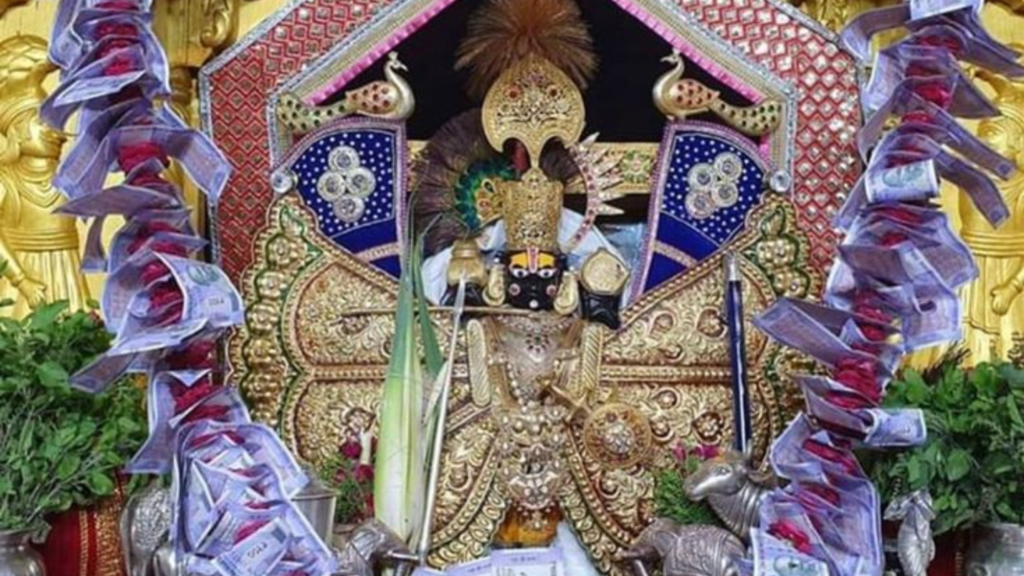
The place signifies the faith and devotion he inspires, the blessings he bestows, and the spiritual connection he nurtures. His devotees find solace, hope, and strength in his divine presence, making him a beloved and revered figure in Hinduism.
Architechture Of Shri Sanwaliya Seth Ji Temple
The architecture of the Shri Sanwaliya Seth Ji Temple, also known as the Sanwariya Temple, is characterized by its traditional Rajasthani style. Here are some key points about its architecture:
Rajasthani Style: The temple follows the traditional architecture of Rajasthan, known for its intricate carvings, domes, and vibrant colors.
Marble Construction: The main structure of the temple is built using white marble, which gives it a grand and majestic appearance.
Ornate Carvings: The temple is adorned with intricate carvings on the walls, pillars, and ceilings. These carvings depict scenes from Hindu mythology and various motifs.

Multiple Domes: The temple features multiple domes that are adorned with decorative elements. These domes add to the grandeur of the structure.
Spire (Shikhar): The temple has a prominent spire or shikhar, which is a tall, tapering structure that rises above the main sanctum. The spire is usually embellished with intricate carvings and motifs.
Pillared Halls: The temple has spacious pillared halls that provide a gathering space for devotees and visitors. These halls are often adorned with paintings and sculptures.
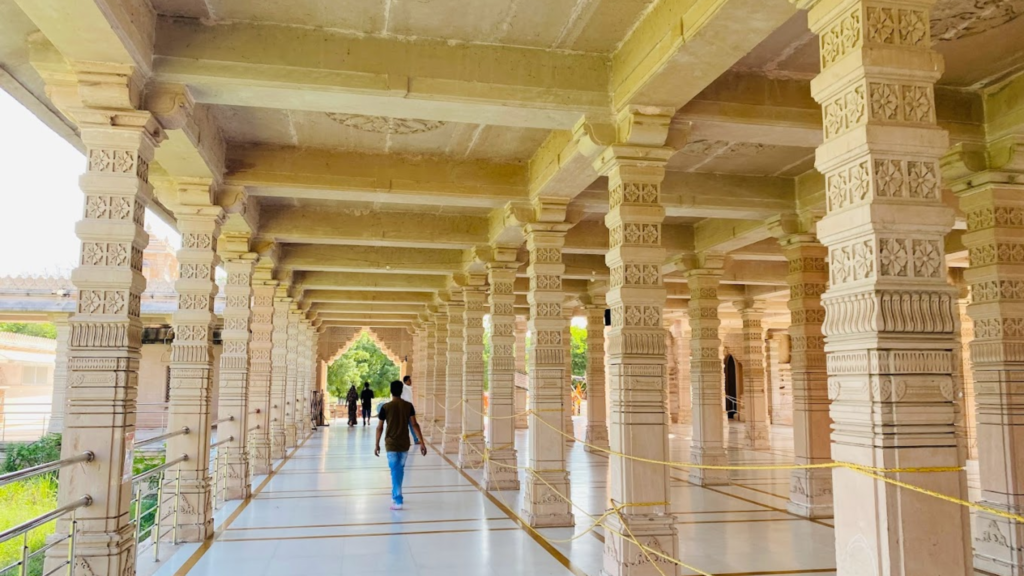
Ornamental Entrance: The entrance of the temple is typically embellished with ornate designs and carvings, making it visually appealing.
Inner Sanctum: The inner sanctum of the temple houses the main deity, Lord Sanwaliya Seth Ji. It is considered the holiest part of the temple and is usually decorated with flowers, garlands, and religious artifacts.
Surrounding Courtyard: The temple is often surrounded by a courtyard where devotees can gather, perform rituals, and participate in religious ceremonies.
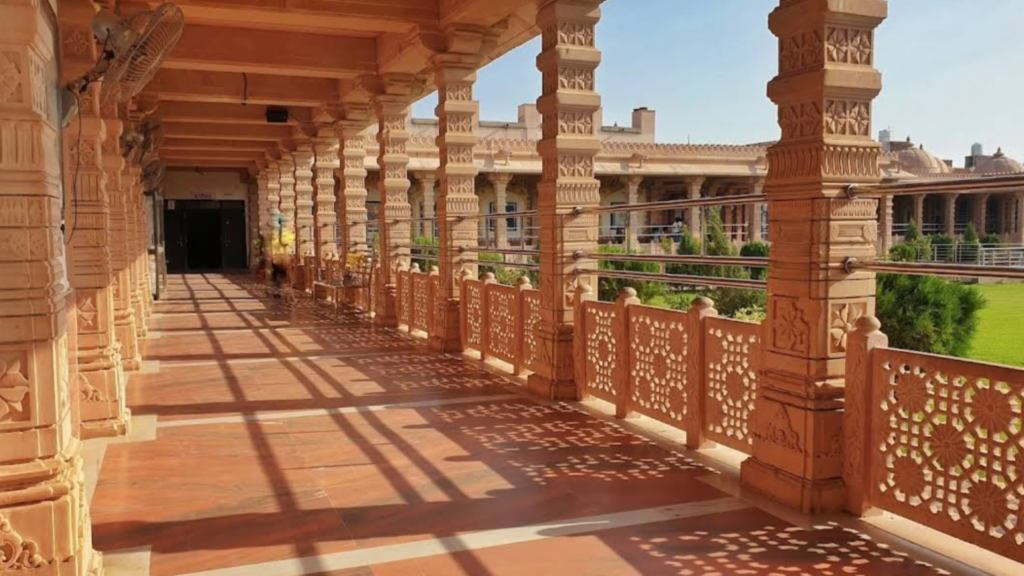
Overall Aesthetics: The architectural design of the Shri Sanwaliya Seth Ji Temple aims to create a visually stunning and spiritually uplifting environment, reflecting the devotion and cultural heritage of Rajasthan.
Temple and Worship
The main temple in Mandfia village is a grand structure that attracts a large number of devotees throughout the year. The temple complex includes the main shrine where the idol of Sanwaliya Seth is placed, along with other smaller shrines dedicated to various deities associated with Lord Krishna and Hindu mythology. The temple is beautifully adorned with decorations, paintings, and intricate carvings, creating a serene and spiritual atmosphere.

Devotees visit the temple to offer prayers, seek blessings, and express their devotion. Many devotees observe fasting on specific days and visit the temple to break their fast and offer prasad (devotional food) to the deity. It is a common practice for devotees to make vows or promises to Sanwaliya Seth, such as offering a donation, performing a certain number of circumambulations around the temple, or engaging in specific acts of charity.
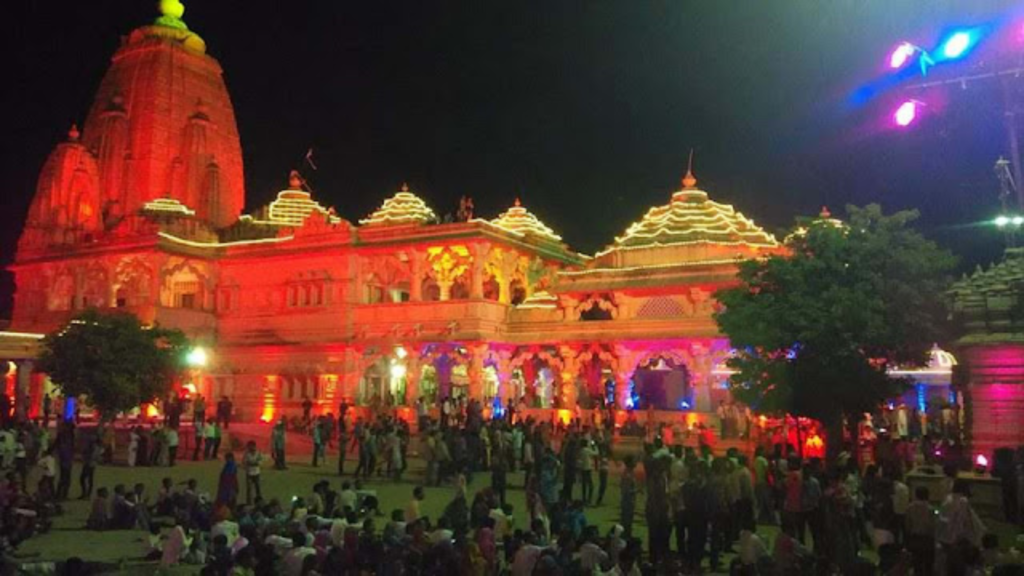
The worship involves various rituals and practices. Devotees chant prayers and sing devotional songs (bhajans) in praise of the deity. The temple authorities conduct daily aarti (a ritual of offering light) and bhajan sessions, creating a vibrant and devotional ambiance. During festivals and special occasions, the temple witnesses elaborate ceremonies, processions, and cultural performances dedicated to Sanwaliya Seth.
Sanwaliya Seth Temple Darshan Timings
| Days | Time |
|---|---|
| Mon-Sun | Morning Hours 05:30 A.M. – 12:00 P.M |
| Mon-Sun | Evening Hours 02:30 P.M. – 11:00 P.M |
Sanwaliya Seth Temple Rituals & Aarti Timings
| Days | Ritual | Time |
|---|---|---|
| Mon-Sun | Mangala Aarti | 05:30 A.M. |
| Mon-Sun | Shrigar Aarti | 07:00 A.M. |
| Mon-Sun | Rajbhog Aarti | 10:00 A.M. |
| Mon-Sun | Evening Aarti | 07: 15 P.M. |
| Mon-Sun | Shayan Aarti | 10:00 P.M. |
How to Reach Sanwaliya Seth Temple
There are various ways to reach the famous Sanwaliya Seth Temple in Rajasthan, India. Here are some common modes of transportation to consider:
| By Air | By Train | By Road |
|---|---|---|
| The nearest airport to the Sanwaliya Seth Temple is Maharana Pratap Airport in Udaipur. From the airport, you can hire a taxi or take a bus to reach the temple. Udaipur is well-connected to major cities in India by air. | The nearest railway station to the Temple is Chittorgarh Railway Station (station code COR), located approximately 33 kilometers away. From Chittorgarh Railway Station a taxi or bus can be hired to reach the destination. | The temple is well-connected by road and can be reached by private vehicle, taxi, or bus. The temple is located on National Highway No.27. The distance is approximately 80 kilometers from Udaipur. and is around 33 kilometers from Chittorgarh. |
Best Time To Visit Sanwaliya Seth Ji Temple
The best time to visit Sanwaliya Seth Ji Temple is during the winter season, which typically lasts from October to March. During this period, the weather is pleasant with mild temperatures, making it comfortable for devotees to explore the temple and its surroundings.
| Season | Best Time to Visit |
|---|---|
| Winter Season | November to February |
| Spring Season | March to April |
| Monsoon Season | July to September |
| On Festival of | Karthik Purnima (October/November) |
| On Festival of | Janmashtami (August/September) |
| On Festival of | Navratri (September/October) |
| On Festival of | Diwali (October/November) |
| On Festival of | Holi (March) |
The summer months, from April to June, can be extremely hot in Rajasthan, including the area around Sanwaliya Seth Ji Temple. Temperatures often soar above 40 degrees Celsius (104 degrees Fahrenheit), making it challenging to visit the temple during this time.
Monsoon season, from July to September, brings rainfall to the region. While the landscape becomes lush and green, it is advisable to check weather conditions before planning a visit during this period as heavy rains can cause inconvenience.
Overall, the winter season offers the most favorable weather conditions for visiting Sanwaliya Seth Ji Temple. However, it’s always a good idea to check the current weather and plan accordingly.
Accommodation Near Sanwaliya Seth Ji Temple
Near Sanwaliya Seth Ji Temple in Rajasthan, there are limited accommodation options available. However, visitors can find a few basic guesthouses and dharamshalas (pilgrim shelters) in the vicinity. These options are typically more suitable for devotees seeking a simple and budget-friendly place to stay close to the temple. Here are some accommodation facilities near Sanwaliya Seth Ji Temple:
- Shri Sanwaliya Seth Dharamshala: This guesthouse is located near the temple premises and provides basic rooms for devotees. It is a convenient choice for those who wish to stay in close proximity to the temple.
- Narmada Mata Dharamshala: Situated near the temple, this dharamshala offers simple accommodation options with basic amenities for pilgrims.
- Local Guesthouses: There might be a few local guesthouses or small hotels available in the nearby villages or towns surrounding the temple. These guesthouses typically provide basic facilities for a comfortable stay.
For more extensive accommodation options, it is advisable to consider nearby cities like Udaipur or Chittorgarh, as mentioned earlier. These cities offer a wider range of hotels, guesthouses, and resorts, catering to various budgets and preferences. Visitors can choose to stay in these cities and make day trips to Sanwaliya Seth Ji Temple for darshan (worship).
It is recommended to check the availability and make reservations in advance, especially during peak travel seasons or religious festivals, to ensure a comfortable stay near Sanwaliya Seth Ji Temple.
Food Option Near Sanwaliya Seth Ji Temple
Near Sanwaliya Seth Ji Temple in Rajasthan, you can find various food options to satisfy your hunger. Here are some suggestions:
- Temple Bhandaras: The temple itself often provides free or low-cost meals, known as bhandaras, to devotees. These meals are usually vegetarian and are served as prasadam (blessed food). You can enjoy a wholesome meal while participating in the spiritual atmosphere of the temple.
- Local Eateries and Restaurants: There might be small local eateries or restaurants in the nearby villages or towns surrounding the temple. These establishments offer traditional Rajasthani cuisine and vegetarian dishes. You can try local delicacies like dal bati churma, gatte ki sabzi, and other Rajasthani specialties.
- Udaipur and Chittorgarh: If you are willing to explore nearby cities, Udaipur and Chittorgarh offer a wider range of dining options. From street food stalls to fine dining restaurants, you can find a variety of cuisines including Rajasthani, North Indian, South Indian, and even international options.
- Nathdwara: A town located around 80 kilometers from Sanwaliya Seth Ji Temple, is also a popular pilgrimage site. It offers a range of food options catering to devotees and tourists. You can find vegetarian restaurants and sweet shops famous for their traditional sweets like Peda and Malpua.
While visiting the temple or its surroundings, it’s a good idea to inquire with the locals or temple authorities about the available food options in the area. They can provide recommendations based on your preferences and dietary requirements.
Also Read – Mahakal Lok Corridor-Exploring The Enigmatic Realm Of Ujjain
Festivals and Celebrations
The temple of Sanwaliya Seth celebrates several festivals and occasions throughout the year, which are significant for devotees and attract a large number of pilgrims. Some of the major festivals and celebrations associated with Sanwaliya Seth are:
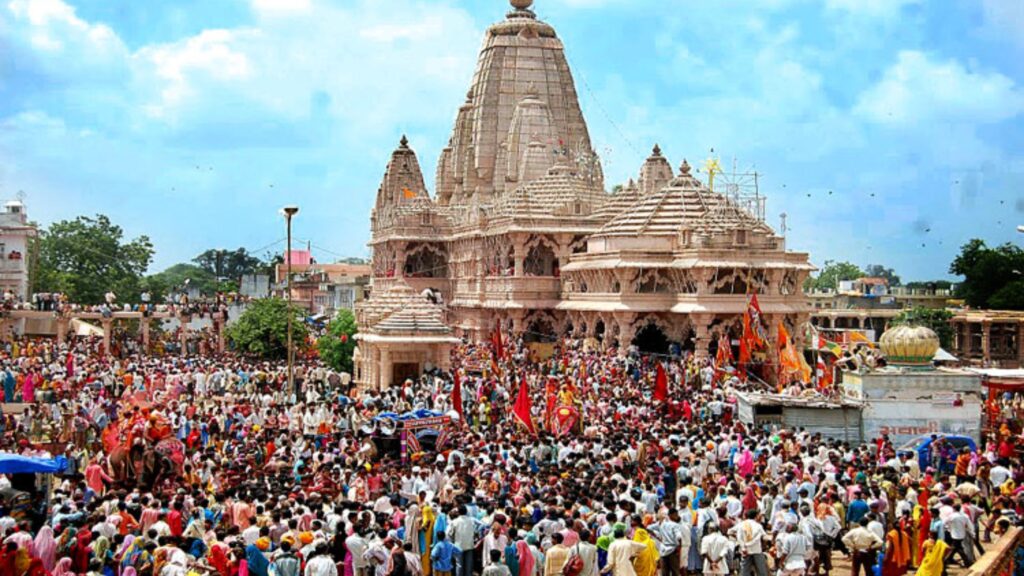
- Sanwaliya Seth Jayanti: The celebration of the divine appearance of Sanwaliya Seth on Earth. This festival, observed with great enthusiasm, marks his birth anniversary. Devotees gather at temples, offering prayers, performing rituals, and engaging in devotional singing and dancing. The celebration is accompanied by a joyous atmosphere filled with devotion and spiritual fervor.
- Chaitra Mela: This is the most important festival celebrated at the temple and marks the anniversary of Sanwaliya Seth’s appearance. It takes place during the Hindu month of Chaitra (March-April) and lasts for several days. Devotees from various parts of Rajasthan and beyond gather at the temple to offer prayers, participate in religious processions, and engage in devotional singing and dancing.
- Janmashtami: Janmashtami is the celebration of Lord Krishna’s birth, and since Sanwaliya Seth is considered a form of Lord Krishna, this festival holds significance at the temple. It falls on the eighth day of the Hindu month of Bhadrapada (August-September). Devotees observe fasts, sing devotional songs, and participate in processions and cultural programs.
- Annakoot: Annakoot is celebrated on the day after Diwali, the festival of lights. It involves the offering of a large variety of food items to the deities, symbolizing gratitude and abundance. Devotees prepare a mountain-like arrangement of various vegetarian delicacies, which is then offered to Sanwaliya Seth. The prasad (consecrated food) is distributed among the devotees.
- Holi: The festival of colors, is celebrated with enthusiasm at the temple. Devotees gather to play with colors, sing Holi songs, and offer prayers to Sanwaliya Seth. It is a joyful and festive occasion that symbolizes the victory of good over evil.
- Sharad Purnima: Sharad Purnima, also known as Kojagiri Purnima, is celebrated during the full moon of the Hindu month of Ashwin (September-October). Devotees observe fasts, sing devotional songs, and perform rituals to seek the blessings of Sanwaliya Seth on this auspicious day.
During festivals and celebrations, elaborate jhankis (tableaus) depicting scenes from Lord Krishna’s life, including Sanwaliya Seth, are created. These jhankis are beautifully decorated and paraded through the streets, accompanied by devotional singing and chanting. The processions provide an opportunity for devotees to express their love, and devotion, and seek blessings.
Devotee Experiences
The devotion is a deeply personal and transformative experience for his devotees. It goes beyond rituals and encompasses a profound connection with the divine. Here are some experiences shared by devotees that highlight the impact on their lives:
- Sense of Inner Peace: Devotees often express a sense of inner peace and serenity when connecting with Seth. Through prayer, meditation, and seeking his blessings, they experience a deep sense of calmness that helps them navigate the challenges of life with resilience and equanimity.
- Divine Guidance: Many devotees believe that he provides them with divine guidance and direction in their lives. They share instances where they have received answers to their prayers, signs, or intuitive insights that have guided them toward making important decisions or overcoming obstacles.
- Healing and Protection: Devotees attribute their physical, emotional, and spiritual healing to blessings. They recount instances where they have experienced relief from ailments, emotional distress, or spiritual challenges through their unwavering faith and devotion.
- Miraculous Experiences: Some devotees share miraculous experiences that they attribute to the grace of Sanwaliya Seth. These experiences may include unexpected solutions to problems, financial assistance during difficult times, or a sense of divine presence and protection during challenging situations.
- Transformation and Personal Growth: Devotees often express how their connection with him has led to personal growth and transformation. They speak of overcoming negative traits, cultivating virtues like compassion and humility, and experiencing a deeper sense of purpose and meaning in life through their devotion.
- Sense of Belonging: Devotees find a sense of belonging and community among fellow worshippers of Sanwaliya Seth. They cherish the opportunity to come together during festivals, temple visits, and spiritual gatherings, where they share their experiences, stories, and devotion, strengthening their bond with the deity and each other.
- Emotional Support and Comfort: Many devotees find solace and emotional support in their relationship with him. They turn to him during times of sorrow, distress, or uncertainty, finding comfort and reassurance in the belief that he is always present to listen to their prayers and offer solace.
The experiences shared by devotees are deeply personal and reflect the transformative power of devotion. Through their connection with Seth, they find inner peace, guidance, healing, and a sense of belonging. Their faith in him nurtures their personal growth, instills resilience, and offers solace during life’s challenges.
Miracles and Healing Powers
It is believed that to possess extraordinary miracles and healing powers that have touched the lives of countless devotees. His divine presence and grace are said to bring about miraculous transformations and healing experiences. Here are some remarkable instances of miracles and healing powers associated with him.
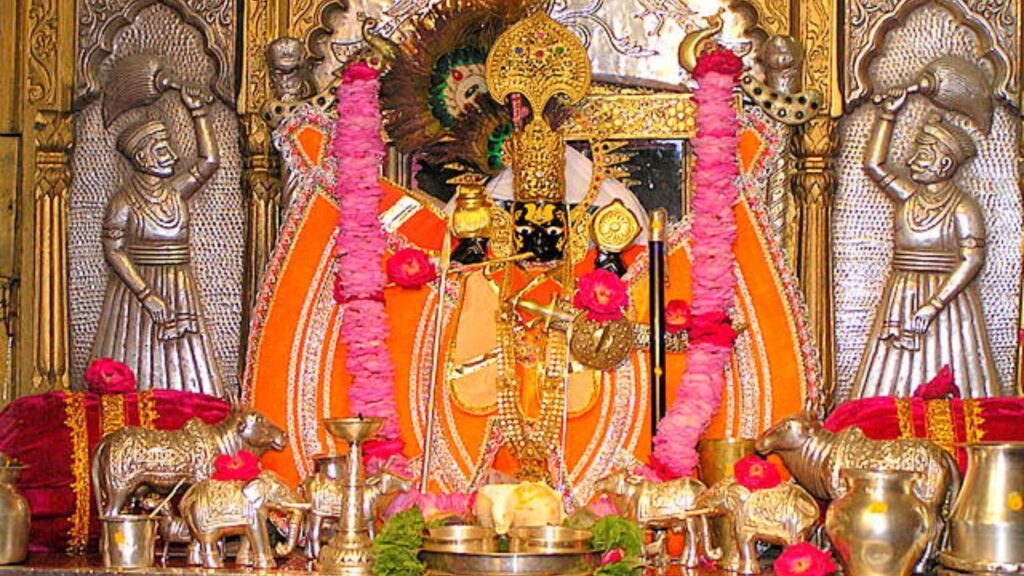
- Physical Healing: Numerous devotees have reported experiencing miraculous physical healing through their devotion. They share stories of ailments, illnesses, and disabilities being miraculously cured or significantly improved after seeking blessings. Such healings are seen as a testament to his divine powers.
- Emotional and Mental Well-being: Devotees also attribute their emotional and mental well-being to healing powers. They speak of finding solace, peace, and a release from anxiety, stress, and depression through their connection with him. The divine presence of Sanwaliya Seth is believed to bring comfort, calmness, and emotional healing.
- Miraculous Interventions: Many devotees share instances where they have witnessed or experienced divine interventions in their lives. These may include unexpected solutions to seemingly insurmountable problems, timely help in times of distress, or divine protection from harm. Such incidents are seen as clear manifestations of his miraculous powers.
- Financial Assistance: Devotees often recount instances where they have received unexpected financial assistance and abundance through their devotion. They attribute these blessings to his divine grace and believe that their unwavering faith has attracted prosperity and financial well-being into their lives.
- Relationship Healing: Devotees seek the intercession of Sanwaliya Seth to heal and restore harmony in their relationships. His blessings are seen as a catalyst for healing broken relationships and fostering love and understanding.
- Spiritual Awakening: Many devotees describe their connection as a catalyst for spiritual awakening and growth. They speak of experiencing a deeper connection with the divine, a heightened sense of spirituality, and a greater understanding of the purpose of life through their devotion. This spiritual awakening is regarded as a profound miracle in itself.
- Protection and Guidance: Devotees believe that he provides them with divine protection and guidance. They share stories of being shielded from harm, guided toward the right path, and protected from negative influences through their unwavering faith in him and his presence is seen as a source of strength, support, and divine guidance.
The miracles and healing powers associated with Sanwaliya Seth inspire awe and faith among devotees. Through His divine grace, devotees experience physical healing, emotional well-being, financial abundance, and spiritual awakening. The belief in his miraculous powers brings hope, strength, and solace to those who seek his blessings.
Influence on Society
Sanwaliya Seth and his temple have a significant influence on society, particularly in the region of Rajasthan, India, where the temple is located. Here are some ways
- Religious and Spiritual Practices: The temple of Sanwaliya Seth serves as a center for religious and spiritual activities. It attracts a large number of devotees, who engage in prayers, rituals, and devotional practices. The presence of the temple promotes religious observance and spiritual growth in the community, fostering a sense of faith and devotion.
- Pilgrimage and Tourism: The temple of Sanwaliya Seth is a popular pilgrimage site, drawing devotees from different parts of India. The annual Chaitra Mela festival, in particular, witnesses a large influx of pilgrims. The pilgrimage to the temple has a positive impact on the local economy as it boosts tourism, providing opportunities for local businesses and generating employment.
- Socio-Cultural Events: The temple organizes various socio-cultural events, festivals, and religious ceremonies throughout the year. These events bring people together and foster a sense of community and cultural identity. They provide a platform for artistic expression, traditional performances, and the preservation of local customs and traditions.
- Charitable Activities: The temple of Sanwaliya Seth is involved in various charitable initiatives. Donations made by devotees are used to support social welfare projects, such as providing educational scholarships, healthcare services, and assistance to the underprivileged. The temple also organizes free meals (langar) for devotees and distributes food and essentials to the needy.
- Religious Harmony: The worship of Sanwaliya Seth transcends religious boundaries, and people from different faiths visit the temple to seek blessings. This fosters religious harmony and promotes a spirit of inclusiveness and tolerance among individuals. The temple serves as a unifying force, bringing people from diverse backgrounds together in their shared devotion.
Overall, the influence of Sanwaliya Seth on society is characterized by religious fervor, spiritual growth, cultural enrichment, and acts of charity. The temple serves as a source of inspiration, community engagement, and a platform for individuals to express their faith and devotion. It plays a vital role in promoting social welfare, religious harmony, and cultural heritage in the region.
Devotional Practices in Sawanliya Seth Ji
Devotional practices dedicated to Sanwaliya Seth are an integral part of the spiritual journey for his devotees. These practices help deepen their connection with him and cultivate a sense of devotion, love, and surrender. Here are some common devotional practices associated with:

- Prayer and Meditation: Devotees engage in regular prayer and meditation as a means of connecting with Sanwaliya Seth. They create a sacred space within their homes or visit temples dedicated to him, offering heartfelt prayers and expressing their devotion.
- Chanting and Singing: Chanting sacred mantras or the name of Sanwaliya Seth is a popular devotional practice. Devotees repeat his name or specific mantras associated with him, believing that the repetition invokes his divine presence and brings blessings. Singing devotional songs (bhajans and kirtans) is also a way to express love and devotion towards him.
- Offerings and Rituals: Devotees make offerings as a gesture of reverence and devotion. These offerings can include flowers, fruits, sweets, incense, and lamps. Rituals such as aarti (ritual of waving a lit lamp) and prasad (offering of blessed food) are performed during temple visits or at home to honor Sanwaliya Seth and seek his blessings.
- Fasting: Devotees observe fasts as a form of devotion and self-discipline. Fasting on specific days associated with Sanwaliya Seth, such as his birth anniversary or auspicious occasions, is believed to purify the body and mind and enhance spiritual connection. Some devotees undertake long-term fasting as a demonstration of their unwavering faith and dedication.
- Pilgrimages: Visiting the temples and holy sites associated is considered a significant devotional practice. Devotees undertake pilgrimages to places like Sanwaliya Seth temple in Rajasthan, India, to seek his blessings and experience a deeper connection with him. Pilgrimages offer devotees an opportunity for a spiritual retreat, reflection, and immersion in devotion.
- Reading and Studying Scriptures: Devotees study and reflect upon the scriptures and sacred texts associated with Sanwaliya Seth. They seek to understand his divine teachings and imbibe the wisdom contained within these texts. Reading and contemplating the stories, anecdotes, and philosophical teachings deepen their understanding and strengthen their devotion.
- Seva(Selfless Service): Engaging in selfless service, or seva, is considered an act of devotion. Devotees actively participate in community service, offering their time, skills, and resources to assist those in need. Seva is seen as an expression of love and gratitude and it allows devotees to serve others as a way of serving him.
Devotional practices are an essential part of the spiritual journey for devotees. Through prayer, meditation, chanting, offerings, fasting, pilgrimages, scripture study, and selfless service, devotees deepen their connection with him and nurture their love and devotion. These practices provide a framework for spiritual growth, self-transformation, and the experience of divine grace in their lives.
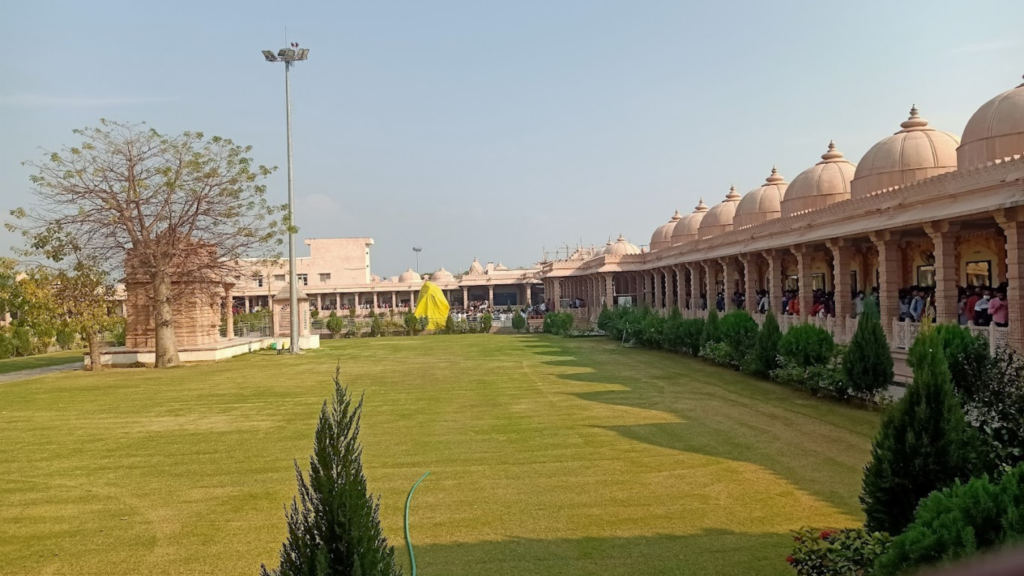
It is advisable to check the local transportation options, timings, and availability before planning your visit to the temple. The temple attracts a large number of devotees, and it is recommended to plan your travel in advance, especially during festivals or peak seasons.
Also Read – Khajrana Ganesh Mandir: Discover The Divine Charm And Spiritual Bliss
Places To Visit Near Sanwaliya Seth Temple
There are several places of interest near the Sanwaliya Ji Temple that you can explore:
- Chittorgarh Fort: Located approximately 80 kilometers from the temple, Chittorgarh Fort is a UNESCO World Heritage Site and a must-visit attraction. It is known for its rich history, majestic architecture, and captivating views.
- Bassi Wildlife Sanctuary: Situated about 30 kilometers away, Bassi Wildlife Sanctuary offers a chance to witness diverse flora and fauna. It’s a great place for nature lovers and wildlife enthusiasts.
- Menal Waterfall: Located around 60 kilometers from the temple, Menal Waterfall is a scenic spot where you can enjoy the beauty of cascading water amidst lush greenery.
- Rana Kumbha Palace: Situated in Chittorgarh, Rana Kumbha Palace is a magnificent palace known for its architectural grandeur. It is a significant historical site that reflects the royal heritage of Rajasthan.
- Kalika Mata Temple: Located in Chittorgarh, Kalika Mata Temple is a revered shrine dedicated to the goddess Kali. It attracts devotees and offers a serene ambiance for prayers and meditation.
- Ratanpur Fort: Situated approximately 45 kilometers away, Ratanpur Fort is an ancient fortress known for its architectural marvels and historical significance.
- Padmini Palace: Another prominent attraction in Chittorgarh, Padmini Palace is a beautiful palace known for its Rajputana architecture and scenic views of the surrounding area.
These are just a few suggestions, and there are many more places to explore near the Sanwaliya Ji Temple, allowing you to make the most of your visit to the region.
Discover the Magnificence of Sanwaliya Seth Ji Temple!
Experience the transformative power of Sanwaliya Seth, the divine guide who touches hearts and souls. Embrace his teachings and witness miracles unfold as you embark on a journey of spiritual growth and personal fulfillment. Join the devoted community and discover the solace, inspiration, and healing that Sanwaliya Seth bestows upon his followers. Let his divine presence illuminate your path, instilling values of compassion, kindness, and service to humanity. Open your heart to the blessings of Sanwaliya Seth and unlock the extraordinary potential within you.
1. Who is Sanwaliya Seth?
Sanwaliya Seth is a revered deity worshipped primarily in the region of Rajasthan, India. He is believed to be an incarnation of Lord Krishna and is revered for his miracles, healing powers, and divine presence.
2. Where can I find temples dedicated to Sanwaliya Seth?
Sanwaliya Seth is primarily worshiped at the main temple located in Mandfia Village in the state of Rajasthan, India. However, there are also other temples dedicated to Sanwaliya Seth in different parts of the country. These temples provide devotees with additional places to worship and seek the blessings of the deity.
3. Can I worship Sanwaliya Seth even if I am not from the Indian culture?
Yes, the worship of Sanwaliya Seth is not limited to a specific culture or ethnicity. People from different backgrounds and cultures can connect with him and seek his blessings through devotion, prayer, and following the rituals associated with his worship.
4. Are there any specific rituals or practices I need to follow to worship Sanwaliya Seth?
While there are no strict rules, some common practices include offering prayers, chanting his name or mantras, visiting temples dedicated to him, observing fasts on auspicious occasions, and engaging in selfless service. It is important to approach his worship with sincerity, love, and respect.
5. What are the benefits of worshipping Sanwaliya Seth?
Devotees believe that worshipping Sanwaliya Seth brings various benefits, including physical and emotional healing, spiritual growth, guidance in life, and the experience of divine blessings. The love and devotion offered to him are believed to attract positivity, peace, and prosperity into one’s life.
6. Is there any ticket for entry into Sanwaliya Seth Temple?
No, The entry into the temple of sanwaliya seth ji is completly free of cost.
7. What time does the Sawariya Seth temple open?
The temple doors open from the early hours of 5:00 AM until 12 Noon, and again from 2:30 PM until 11:00 PM.







